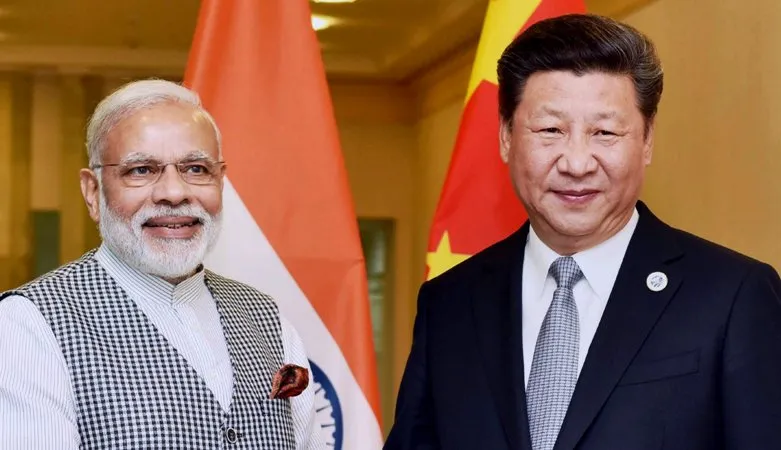-
CENTRES
Progammes & Centres
Location

India-China relations have taken a turn for the worse lately, highlighted most prominently by China’s so-far successful efforts to keep India out of the Nuclear Suppliers’ Group (NSG). When it comes to defence and security, the Modi government’s concerns about China’s rising clout in Asia have prompted it to move closer to the United States. This coldness appears to be partly a result of declining economic relations: diminishing returns from economic engagement with China encourage the centre to prioritise strategic issues over Chinese investment. But the national government’s new approach is increasingly putting it at odds with its own states, which continue to see China as a source of investment rather than a strategic problem.
Prime Minister Modi sent a message to China on his first day in office, when he welcomed Lobsang Sanghay, the leader of the Tibetan government in exile, to his inauguration. Although the two sides have worked to keep things positive, they have struggled to overcome deep differences of opinion on Pakistan and India’s place in the global order. Indian elites’ opinions on China have hardened following China’s block on an Indian attempt to have Masood Azhar designated as a terrorist by the UN and, more recently, China’s perceived role as the lone stalwart preventing India’s entry into the NSG.
But not every Indian politician criticised China for its role in blocking India’s application for membership in the NSG. Days after India’s rebuke in Seoul, Shivraj Singh Chouhan, Chief Minister of Madhya Pradesh and a member of Prime Minister Modi’s own Bharatiya Janata Party (BJP), called for economic dialogue with China to continue despite setbacks in the national security arena. Chouhan had just returned from his second trip to China since coming to power in the poor, populous state of Madhya Pradesh. Chouhan spoke at an investors’ conference, lobbied the Asian Infrastructure Investment Bank for funding for irrigation projects, and promoted his plans to create four industrial townships solely for Chinese investors.
Chouhan is far from the only regional leader courting China. Even as India was smarting from its loss at the NSG plenary in Seoul, Andhra Pradesh chief minister Chandrababu Naidu departed on a five-day trip China. A review of the Wadhwani Chair’s weekly Update on India’s States shows that since October alone Chinese groups (government or private) have frequently interacted with the states we cover:
At the Centre, in contrast, the optimistic days preceding President Xi’s 2014 visit to India seem very far away. Chinese officials initially floated promises that Xi would announced $100 billion in investment during the visit; as it turned out, Xi announced only $20 billion over five years. Nearly two years later, China has invested less than five percent of that amount. China’s major economic and infrastructure initiative, One Belt One Road (OBOR), will likely occupy the majority of China’s overseas investment dollars for the foreseeable future. As conceived, OBOR neatly bypasses India; while India could eventually take advantage of OBOR infrastructure, to do so it will have to build its own ‘road’ to Central Asia, on its own dime.
Prospects for large-scale Sino-Indian economic cooperation have also been gradually deteriorating against the backdrop of a worsening trade deficit: UNCTAD data put it at $46.1 billion in 2014, a figure that has apparently risen since. Department of Commerce data show that the value of Indian exports to China has fallen for two years straight, and for four out of the last five years. This imbalance is exacerbated by China’s high barriers to imports of services, a high-value export in which India excels. There is no sign of the ‘high-level task force’ that the two countries agreed to set up to address the issue. India, for its part, has been pursuing an import-substitution campaign for sectors like capital goods that seems aimed, at least in part, at Chinese exports.
The difference between state and national leaders is probably quantitative rather than qualitative: the central government is unlikely to turn down a solid Chinese investment in India. But Delhi has to weigh the alluring, if evanescent, prospect of more Chinese investment against the very real, very present obstacles China poses to India’s rise in Asia. The lack of progress on the trade front, furthermore, reduces the incentive for Delhi to hold its tongue in the face of Chinese slights. State leaders, in contrast, are only responsible to the people of their state, and are far less likely to let national security interests dampen their courtship of China.
India’s chief ministers will make their preferences known at the national level, perhaps exerting pressure on the center to avoid any potential showdowns or confrontations with China that could cut off investment into their states. Madhya Pradesh and Haryana are BJP states, and Andhra Pradesh’s Telugu Desam Party is a member of the National Democratic Alliance coalition. Taken together, these five states send 127 members to the Lok Sabha, the lower house of India’s Parliament. Chief Minister Mamata Banerjee alone controls 33 Lok Sabha delegates. They would form a powerful nucleus for an attempt to block national legislation perceived as anti-China. Strong anti-China moves on the part of India’s central leadership could thus provoke significant backlash from the party rank and file.
Increasingly, it is state leaders that are carrying the banner for the Sino-Indian economic relationship, while the national government focuses on security concerns. Communication and cooperation is imperative to avoid the kind of Center-State foreign policy dissonance apparent on other regional issues, such as the Sri Lankan civil war or the Teesta water-sharing agreement.
The author is an Associate Fellow at the Wadhwani Chair for US-India studies in the Center for Strategic & International Studies (CSIS).
The views expressed above belong to the author(s). ORF research and analyses now available on Telegram! Click here to access our curated content — blogs, longforms and interviews.